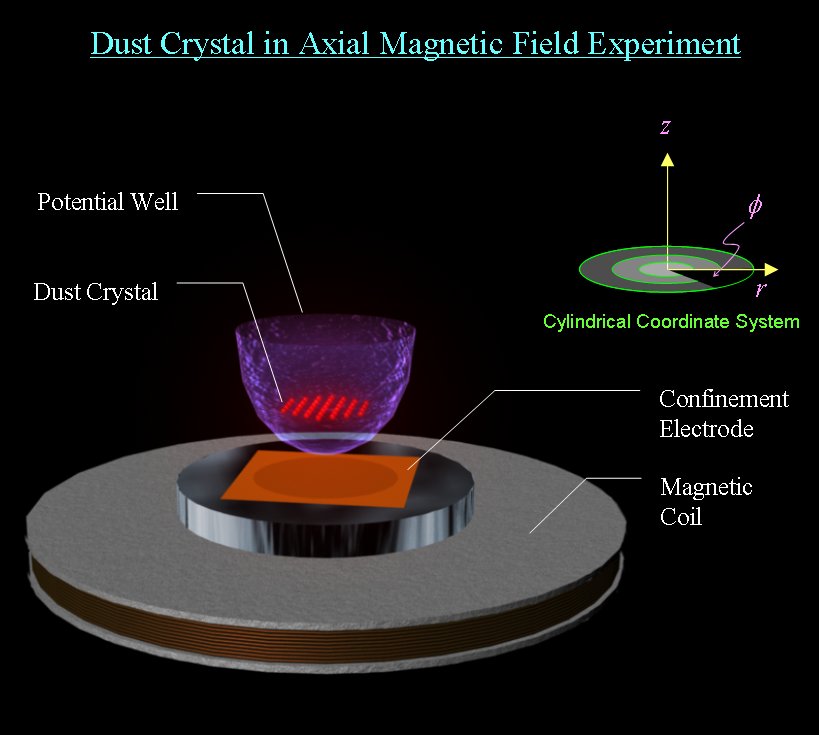1.1 - Dust Crystals and Dust Clusters
When micron-sized dust particles are released
into the plasma, the dust particles undergo frequent collisions with the
highly mobile electrons rather than the slow and heavy ions within the plasma.
As a result, these dust particles accumulate thousands of electrons on their
surface and become negatively charged. The interaction between the dust
particles are strongly Coulomb repulsive. It is possible to confine these dust
particles in a potential well with an external electric field and be levitated in the plasma to form a 2-dimensional or a 3-dimensional
lattice with an ordered structure similar to a crystal. These crystals are
commonly known as dust coulomb crystals. They are macroscopic with an
inter-particle distance in the sub-millimeter region. But when illuminated by
a laser, the structures in the crystal are clearly visible with the naked eye
(see figure 1.1.1).

Figure 1.1.1 - A simplified diagram of our apparatus demonstrating what a
dust crystal looks like in the experiment. This visualization is drawn using
Maya Unlimited 4.0.
Because of the unique nature, along with the relatively easy production and
simple optical imaging required, dust crystals have attracted strong
attentions in plasma physics. These areas arise mainly from the interests of
solid states physics and microchip fabrication contamination controls.
Currently, there is a shift in the interests towards the dynamics of the
crystal. One example is crystal rotation.
When a weak axial magnetic field is applied, particles in the dust crystals rotate
collectively. In our experiment, the rotation was observed to be right-handed
with respect to the direction of the axial magnetic field. The reason why such rotational behavior arises is still unknown.
Theory suggested that the momentum transferred onto the particle by
ion drag in the azimuthal direction might be the cause of the crystal
rotation.
In order to better understand the rotational behavior, a simpler crystal
system is
needed for analysis. In our investigation, dust coulomb clusters of one up to
twelve particles levitated in a horizontal plane were studied. For different
clusters of number of particles N at magnetic field strength B,
we were able to obtain various parameters from the cluster rotational motion
such as angular position
f, angular
velocity
w as a function of
time t. One interesting phenomenon we observed in the cluster
rotational motion is the "Periodic Pause".

